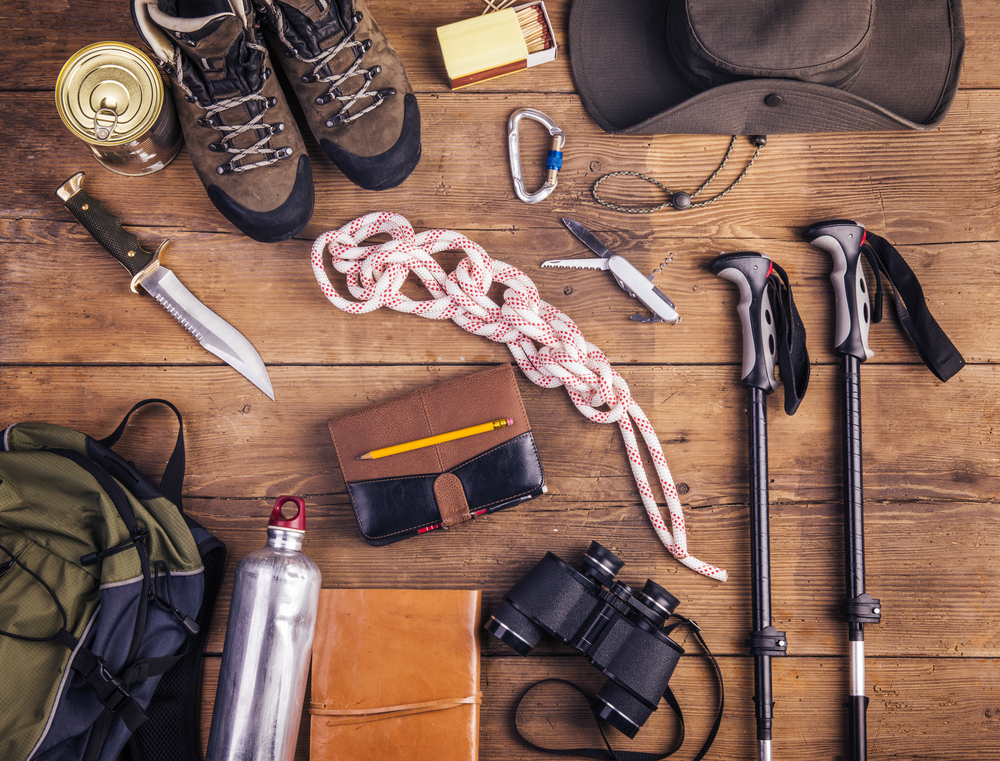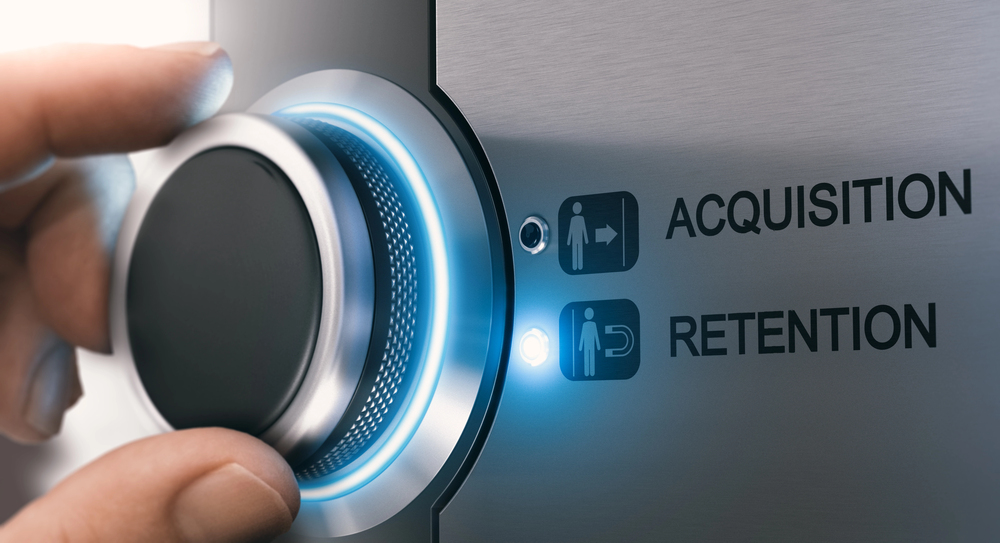
Digital Survival Guides – The Best Prepper Business Opportunity?
Mar 1, 2021 4 minute read
Of course, those of you in the survivalist and prepper niche will already have benefitted from the uptick in interest brought about by the coronavirus pandemic. But recent events such as the continuing wildfires on the US West Coast and huge snowstorms that have wreaked havoc in Texas, in particular, have brought prepping and survivalism to the mainstream.
Stockpiling an inventory of essentials to tide families over in the event of a natural disaster or a public health emergency is now commonplace. But many products associated with this vertical are difficult to source and sell.
For instance, tactical survival gear is often made in China and can take weeks to arrive at customers’ doorsteps. Guns are illegal to sell online in many states. Those that do allow small businesses to sell guns online demand strict and time-consuming background checks.
That’s why writing and selling digital products and e-books in this space is a perfect way for startups in this space to gain traction, develop a robust processing history, and scale up to selling physical products.
However, that said, there are some pitfalls that you should look to avoid.
Avoid Producing Content That Promotes Fake Conspiracy Theories
While it’s perfectly acceptable to produce e-books and other digital content that educates readers on disaster preparedness, there are some in the prepper community that crosses the line into promoting fantastical theories on the end of the world as we know it. Not only is this likely to limit the audience for your online business to a very specific sub-segment of this niche market, but it could stray across the boundaries of legality.
This is not the place to get into the free speech versus illegal content debate. The point is, when writing and marketing these guides, you’ve got to keep your payment processor in mind.
Underwriters are not going to spend time deciphering whether your content is protected under free speech laws or not. If they think your content presents a risk by association, then they’ll simply pass on the chance to work with business owners working in a legal grey area.
In a world whereby many companies are put on trial by social media, they’ll see your content as presenting too much reputational risk to their brand. Just look at how the major card brands reacted to the Pornhub scandal.
Nothing is stopping you from theorizing ideas such as a Zombie apocalypse. But making striking statements and framing them as fact without any empirical evidence is bound to turn off acquiring banks and could land you in serious legal trouble.
Remember, asserting that specific individuals, races, or religions are going to cause the end of the world is illegal. Promoting such theories can and will leave your company open to civil lawsuits and could see criminal charges brought against you personally, not to mention the reputational damage.
So while you have every right to have your own theories on who or what will cause a doomsday scenario, it’s best to focus materials on teaching the skills and provisions people will need to survive should it happen.
With those considerations out of the way, let’s look at the potential markets in which you can sell your e-books and products.
More interested in selling tactical gear than info products and guides teaching survival skills? The bad news is that several obstacles face you as a business owner, especially if you plan to sell guns. Read what they are and how to overcome them in our complete guide to selling tactical gear here!
Interest in Emergency Preparedness and Survivalism Continues to Grow Across the Globe
There was once a time when doomsday preppers were limited to the United States. While there’s no doubt that this is a lucrative market to run your survival offer, there is now a real chance to scale to other parts of the globe. From France to Thailand, interest in preparing for worst-case scenarios has taken off and shows no signs of slowing down.
The reason that survivalist guides, products, and survival kits are gaining so much traction is because of their useful real-life applications. Administering first aid, learning how to preserve food, and using tools that aid general survival skills in the wild are all valuable, even if the worst never comes to pass.
Those off-grid skills come in handy for fairly regular natural disasters such as hurricanes, flooding, forest fires, and even earthquakes and tsunamis (driving up demand for these skills in Asian countries). In Europe, these skills are also in demand from those following the homesteading (becoming self-sufficient from the land) and wild camper trends.
By teaching both hard and soft skills in this space, you can attract a truly global audience to your digital content. And there’s no reason it should be limited to an ebook or digital course. Why not build a following via a podcast or YouTube channel? Austrian-born prepper Survival Lilly has over one million subscribers on YouTube, which she has leveraged into a successful online store that sells physical products to the North American market.
So what’s the best way to scale up your prepper and survival guide business?
How to Grow and Scale Your Survival Guide Business
Many early startups in this niche make the mistake of publishing their material on Amazon when they could make far more by selling their digital and info products under their own roof. One of the best ways to scale your offer up to the kind of high-volume sales that will temp merchant account providers into working with your business is to set up a tempting affiliate program.
If you’re already doing solid five-figures per month with your digital content offerings, it might be time to think about introducing physical products that customers can use to construct their prepper kits. You could even pre-package these bundles and sell them to customers yourself and take advantage of economies of scale as you grow your online business.
When selling tactical gear equipment to kit out bug-out shelters, it’s best to focus on practical elements first rather than tools that could be considered weapons such as knives and guns. Not only do they increase your risk profile in the eyes of merchant services providers, but they also come with a lot of red tape. Guns can only be sold online in certain US states and don’t have much potential to scale beyond the US as they are illegal to sell in almost all other countries.
You can still build an incredibly successful business selling items such as:
- Multitools
- Power generators
- Gas stoves
- Survival blankets
- Medical and first aid supplies
- Long-life food and beverages
- Flashlights
- Warm clothing items
- Gas and fuel cans
- Water filtration systems
But this is academic if you can’t get a payment processor on board. So what do you need to do to secure solid processing for your online payments?
Start With ACH Processing
While it’s not impossible to secure credit card processing without some form of processing history, it’s incredibly challenging. But with third-party payment aggregators such as Stripe and PayPal ruling out this niche altogether, where’s the best place to start accepting online payments from your customers?
ACH processing offers an excellent method for getting your survival business off the ground. Not only is it easier to set up, but it comes with several advantages.
First and foremost, the processing fees associated with payments over the ACH network are much cheaper than credit cards. Next, it’s far more difficult for a customer to issue a chargeback after making an ACH payment. This means you can build up a clean processing history that is bound to impress acquiring banks when applying for a high-risk merchant account.
With three to six months of ACH processing under your belt, you stand a much better chance of securing a merchant account for processing credit cards with favorable fees, reserves, and settlement periods.
Secure More Than One High-Risk Merchant Account for Your Credit Card Processing
Just as is the case with any business strategy, you should never have all of your eggs in one basket. That’s why it makes sense to secure a few merchant accounts for the different areas of your business.
For example, since you might start with ebooks and info products, you might want to choose a Merchant Category Code (MCC) such as 5815, which denotes digital goods such as ebooks.
As you scale, you could add another merchant account for your outdoor gear and equipment. Having several merchant accounts allows you to spread the risk of your online card payments across multiple channels. You can also boost conversions by cascading declined payments through another merchant account.
With solid payment processing in place, there are a few more tips to successfully scaling your survival business.
Build a Robust Supply Chain That Can Meet Sudden Peaks in Demand (When SHTF!)
Most natural disasters arrive with a few days warning at most. Some occur in a matter of hours. That’s why you need to build a supply chain that’s robust enough to deal with sudden peaks in demand for outdoor equipment that could be crucial.
Traditionally, prepper equipment and tactical gear is manufactured in China. But delivery from a factory in Shenzen to a warehouse in the US could take over a month. That’s why you need to source as many local suppliers as you can and order overseas products to hold in bulk in your US or EU-based warehouses.
In an emergency or perceived incoming disaster, preppers want and need their orders fast. If you can’t deliver what they want in 48-72 hours, they will choose an online store that can.
Clear Descriptors and Straightforward Refund and Return Policies
We see it all the time — prepper sites without clear descriptors. If your company is selling survival guides, but your descriptor is something like “WIZARD LABORATORIES INC,” your customer will not recognize the charge on their statement. So many chargebacks can be saved by merely changing the descriptor to something much more relevant such as “SURVIVALISTGUIDES.COM”
Of course, it doesn’t have to be your website URL, but it must jog your customers’ memory. Otherwise, it might as well be labeled chargeback!
On a similar theme, the number one cause of chargebacks is customers running out of patience when trying to find out how to get a refund or return their items. Filing a chargeback takes a couple of minutes, so you need to make sure customers can seek resolutions to their issues in a shorter timeframe.
Adding instant customer support options such as live chat is a good place to start. Ensuring your return and refund policies are only a few clicks away from your website homepage is even more important.
Build Your Survival Business Empire with Help From the High-Risk Payments Experts
We’ve already helped several merchants in this space to navigate the complexities of accepting payments in what is an incredibly high-risk vertical in the eyes of payment processors. We can even help with firearms, should you wish to target the US prepper community.
So whether you want to start with low-risk survival guides or literally go full guns blazing from the outset, we can help you.




